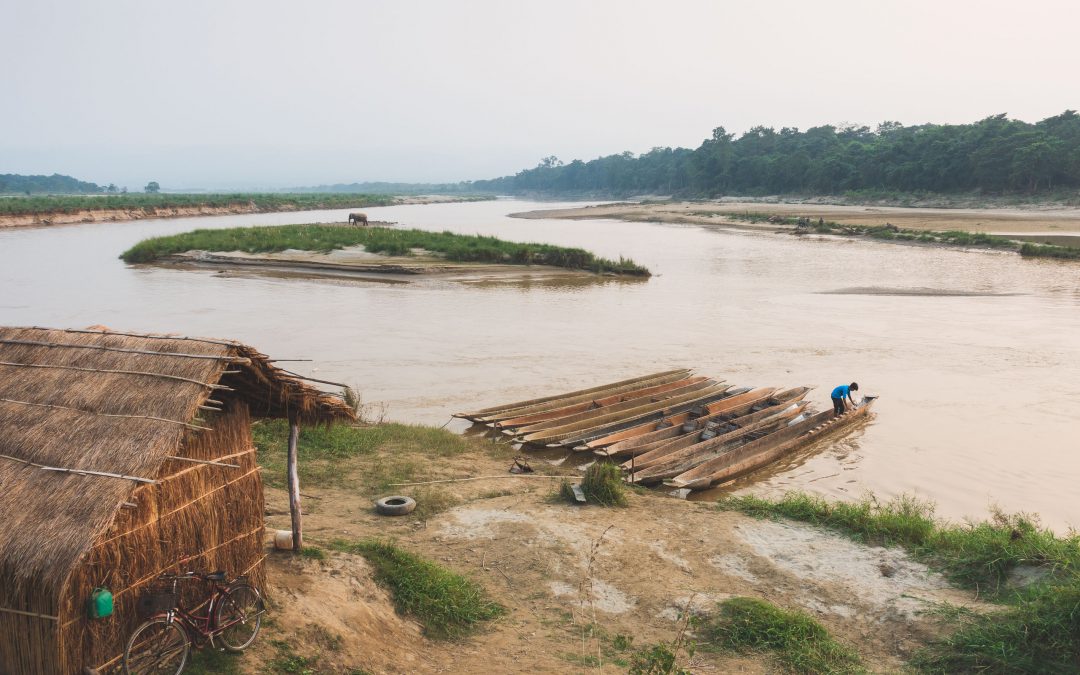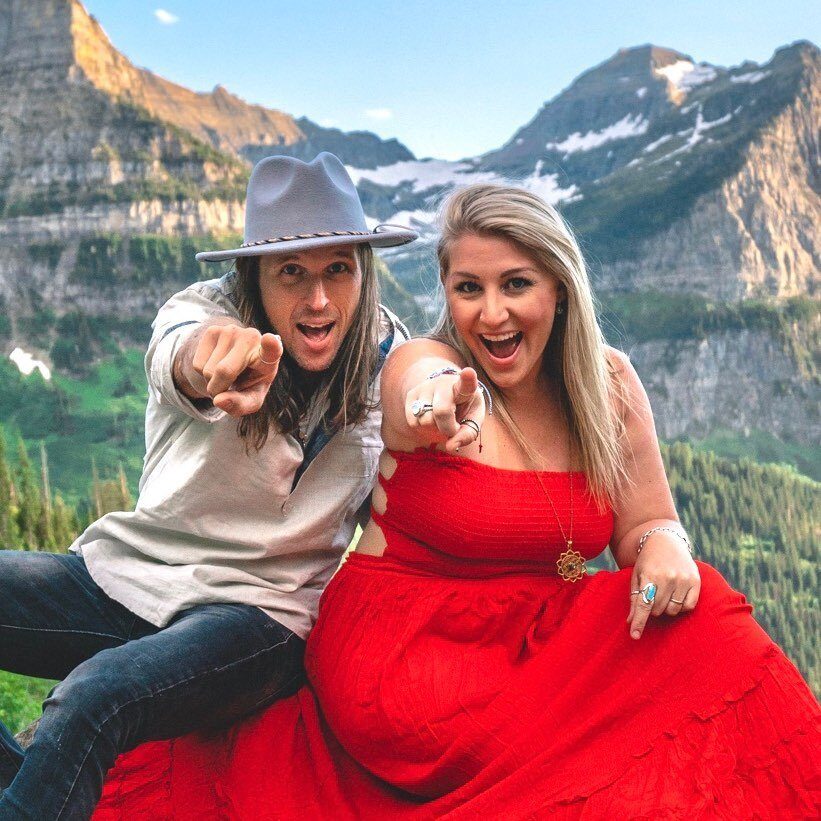Sure… Nepal is most well known for being home to the world’s tallest mountains; a destination for the most daring of climbers. It’s also where the Buddha was born; marking it as a pilgrimage site for millions across the world. But, there is yet another side to Nepal that is equally as extraordinary – that is the ‘wild’ Nepal of Chitwan National Park. Located southwest of Kathmandu along the border with India, Chitwan is a UNESCO World Heritage Site and Nepal’s first protected wildlife refuge. Measuring 360 square miles, It is home to over 60 different mammal species including the king of the jungle – the Bengal tiger.
We traveled by private car from Lumbini to the small riverside village of Sauraha. This village is one of two main access points into the park. The trip took about 4 hours on mostly flat and straight roads. This was our shortest road trip since getting to Nepal. What the trip lacked in duration though it made up for in temperature – it was a warm ride! The village of Sauraha is predominantly farmland. It is only the small area along the banks of the Rapti River that is built up to accommodate the safari-bound travelers.
Our friend, Prem, back in Kathmandu made arrangements for two nights at the Hotel Westwood for us. When we arrived, we were pleasantly surprised at how lovely the hotel grounds were and how warm and welcoming the staff was. They helped us to get checked in and insisted we freshen up in our room before meeting to discuss the safari activities planned for our stay. The hotel is horseshoe-shaped with a grassy, shaded courtyard in the middle.


After a brief rest and freshening up we met with the hotel staff. During our short, 2 night, stay they were committed to helping us see as much of the park as possible. The most helpful part of staying at the Hotel Westwood is that all the activities and food are included! This really allowed us to enjoy and maximize our time there. The staff organized a schedule of events for us, and all we had to do was show up. It was so easy. The first thing on the agenda was an early dinner!
Dinner was served on the second floor open dining room. We took a table along the outside edge looking over the main road. The village was mellow and quiet; there were no beeping horns to be heard, and next to no cars. There was, however, the occasional elephant (or 2) we would see sauntering down the street with their mahout. I have to admit, it was a little unusual at first to see elephants walking down the road, but it is just an ordinary thing for the Nepalese people who call this area home.
When we finished eating, we met with our wildlife guide, Ram (pronounced Rham), and set off on foot for a walk along the Rapti River to hopefully get a glimpse of some wildlife and watch the sunset over Chitwan National Park. Our guide explained the river creates a natural boundary between civilization and the park. There is no development across the river, just lush sub-tropical lowlands; a wildlife haven.

Walking along the river’s edge, we were spectators of life in Chitwan. There were free-roaming elephants in the distance trudging through the river and one we saw giving itself a dusting of fresh dirt. Small dug-out boats propelled by boatmen pushing their way across the river with long sticks ferried people from one side to the other. It was a peaceful setting filled with the faint sound of flowing water and the humming early evening insect orchestra. Distracted by all that was before our eyes we completely neglected to see a sizeable one-horned rhino crossing the river and making his way towards us. Ram, pointed it out and watched it’s movements intently. It is a magnificent animal to see in the wild and one that immediately commands respect. At its closest, the rhino was nearly a car-length from us and generally seemed uninterested in our presence. We sat and watched the rhino pass by and continue downstream.



The sunset before us was spectacular. The fiery sphere sat low on the horizon and cast a warm orange glow across the sky. As we sat watching the sunset, we both expressed how grateful we were to be there in that moment together. One more sunset for the books!

Our final stop for the evening was at the Tharu Cultural Auditorium. There we saw a presentation put on by the Tharu indigenous people; who called the area along the Rapti River home. The performance began with drumming and their traditional music. A group of dancers took the stage first. They were donned in traditional attire. Their dance was fluid, and their movements were reminiscent of willow branches swaying in the wind. The rhythmic beat even had us bouncing in our seats.
Next up were the stick fighters. A group of men retook the stage in traditional attire, but they each wielded a fighting stick. As the music picked up, they began a choreographed routine part dance part fighting. They would sidestep, spin and strike sticks letting out a thunderous CLAP as they hit. These guys were dangerous, and one wrong move would have a painful outcome! When the performance finished, they welcomed the spectators on stage to dance with them. We excitedly seized the opportunity and joined the large circle that formed on stage. Trying as best possible to follow the dancer’s movements we made a few rotations around the stage and then were paraded down and out of the auditorium. With our first day in Chitwan drawing to a close, Jessica and I laughed and danced down the street back to our hotel.


The next day we had a full schedule of safari activities. All Jessica talked about over breakfast was how she hoped she would catch a glimpse of a Bengal tiger. Ram met up with us and took us to the jeep for our safari. The national park only has one road within it, and it is only accessible by park officials and certified guides. Our jeep crossed the river into the park and bounced along the road. We were quickly greeted by monkeys high up in the trees which seemed to enjoy swinging along the branches traveling alongside us. Jessica had expressed how badly she wanted to see a tiger and Ram was on the lookout for her.
Our jeep started to slow near a small clearing in the forest. There beneath a tree was a female rhino and her young calf. They were nestled close together and took no mind to our presence. It was terrific to see the young rhino with its mother. Chitwan National Park is at the forefront of work being done to bring back the one-horned rhino population and seeing this young calf was evidence of their efforts. Leaving the rhinos behind we continued through the park spotting numerous peacocks, elephants, and spotted deer. The Bengal tigers, however, were nowhere to be seen. The ride through the park was lovely though. Following the road, we transitioned from thick jungle to expansive meadows several times. We could easily see how unique and vital this refuge was for the wildlife. Not only does Chitwan provide a habitat for many endangered species it actively protects them from poachers with armed park security on constant patrol.



Our safari ended back where we started, and as we parted with Ram for a mid-day break. He suggested we go check out the elephant shower down by the river. Intrigued, we made our way over to have a look and came upon a large crowd at the water’s edge. There we saw two elephants in the river with people on their backs. The elephants drew up a trunk full up water and then sprayed it on the people. I was apprehensive at first, but after watching a few people do it, we decided we had to. We dropped our belongings and headed into the river.
Standing next to the elephant we were intimidated by its enormous stature. The elephant was so gentle though and almost helped us to get on its back. Its skin was coarse and leathery with sparse wiry hairs. I remember feeling my legs widen as it took a breath expanding its body. Distracted by the experience of being on an elephant I didn’t even see its trunk rise up before blasting us in the face with water. Jessica and I both broke out in laughter and then were showered a few more times before being shaken off and splashing into the river. We emerged from the river with smiles; glad had we decided to get baptized by the elephant that day.

On shore we were immediately greeted by a familiar face, Julian, our friend from Lumbini, had caught the whole experience on camera for us. It was a terrifically serendipitous reunion. We were beginning to understand that the connections you make traveling are just as valuable as the things you see!
The plan for the rest of the day included a safari on foot through the park and a ride down the river in a dugout canoe. First, we returned to our hotel though. We changed out of our wet clothes, had a bite to eat and then reunited with our guide Ram. He took us to a dugout canoe, and we sat with only inches to spare between the surface of the water and the edge of the boat. Our boatman pushed the canoe along while Ram kept an eye out for wildlife. He spotted a couple of crocodiles, a python, eagles and several other birds as we made our way down the river.






